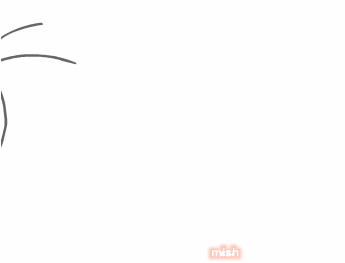Love
Copy this code to your profile or website:
Copy this code to your profile or website:
Graphic Design Articles & Features
Archetypal advertising and design
Shaun Crowley
We are all aware of how advertising has changed over the decades. What started as ‘Here’s the product, now go and buy it!’ advertising in the 1950’s, has turned into ‘Here’s a feeling, now feel it!’ advertising, in which products appear as personalities, metaphors, and emotions.
Advertisers have drawn on psychological theory to target people’s emotional needs in consumer advertising, where buying decisions are more likely to be spontaneous or heavily influenced by spontaneous and often unconscious emotions.
“The words of the prophets are written on the subway walls”
These days, we are bombarded with promotional messages and visuals everywhere we go. They are present in subways, on TV, in magazines, in the street, and even on the clothes of the people walking by. In fact, everything we do exposes us to advertising imagery in some form or other.
So why is it that we don’t feel overwhelmed by such a relentless wave of provocative icons? How come none of us feel compelled to read each of the subway billboards before we get on the train? How come we don’t remember every single TV advertisement during the break?
The reason is called desensitization. It’s a process in which our brains learn to filter out periphery messages. This filtering is done subconsciously—which is why we are often aware we saw a particular advertisement, but unable to recall it.
Finding out how desensitization works has led cognitive researchers to conclude that our subconscious does a whole lot more work than previously thought.
The elements of design are used, and often combined, to create graphic works. They should not be confused with principles of design, such as balance and white space, but rather components such as color, type and images. Presented here is a list of the most commonly used elements in graphic design.
Shapes
From ancient pictographs to modern logos, shapes are at the root of design. They are used to establish layouts, create patterns, and build countless elements on the page. With graphics software such as Illustrator, creating and manipulating shapes is easier than ever, giving designers the freedom to create them at will.
Lines
Lines are used to divide space, direct the eye, and create forms. At the most basic level, straight lines are found in layouts to separate content, such as in magazine, newspaper, and website designs.
This can of course go much further, with curved, dotted, and zigzag lines used as the defining elements on a page. Often, lines will be implied, meaning other elements of design will follow the path of line, such as type on a curve.
Color
Color is an interesting element because it can be applied to any other element, changing it dramatically. It can be used to make an image stand out, to show linked text on a website, and to evoke emotion. Graphic designers should combine their experience with color with an understanding of color theory.
Type
Type, of course, is all around us. In graphic design, the goal is to not to just place some text on a page, but rather to understand and use it effectively for communication. Choice of fonts (typefaces), size, alignment, color, and spacing all come into play. Type can be taken further by using it to create shapes and images.
Art & Illustration
The use of illustrated work and fine art in a design can determine its character. It can be anything from a logo to a fully illustrated CD package. Graphic designers may create their own artwork, purchase it, or commission an artist to create an exclusive piece for a project.
Photography
A powerful image can make or break a design. Photographs are used to tell stories, support ideas, and grab the audience’s attention, so the selection is important. Stock photos can be purchased at all price levels on many websites, or photographers can be hired for project-specific shoots.
Texture
Texture is a unique element because the audience can feel it. Paper selection, from thin to thick to matte to glossy, can affect the overall perception of a graphic work. People will often give more attention or credit to something on heavier stock. Aside from paper choice, texture can be used in limitless, creative ways, such as in package design.
These elements can be used in countless ways. In the end, a combination of the elements you choose, how you alter them, and where you arrange them on a page will determine the success of a design.
Article form : http://www.designertoday.com/Articles/4591/Archetypal.advertising.and.design
Love
Copy this code to your profile or website:
Copy this code to your profile or website:
Love
Copy this code to your profile or website:
Copy this code to your profile or website:

ไม่มีความคิดเห็น:
แสดงความคิดเห็น